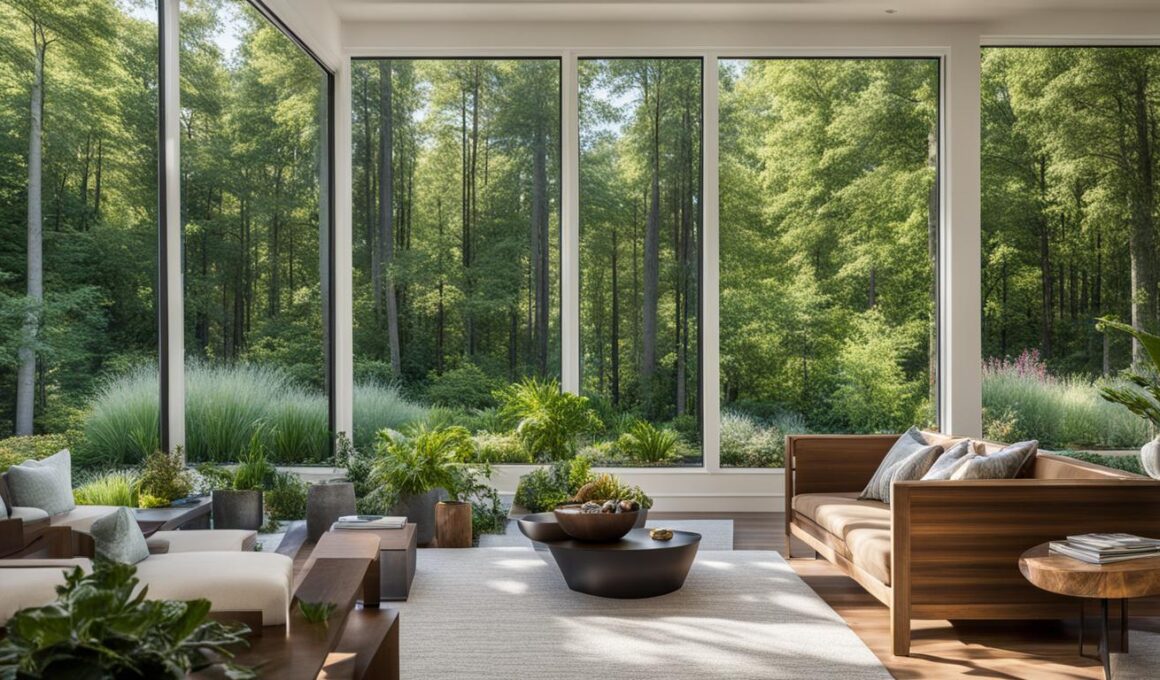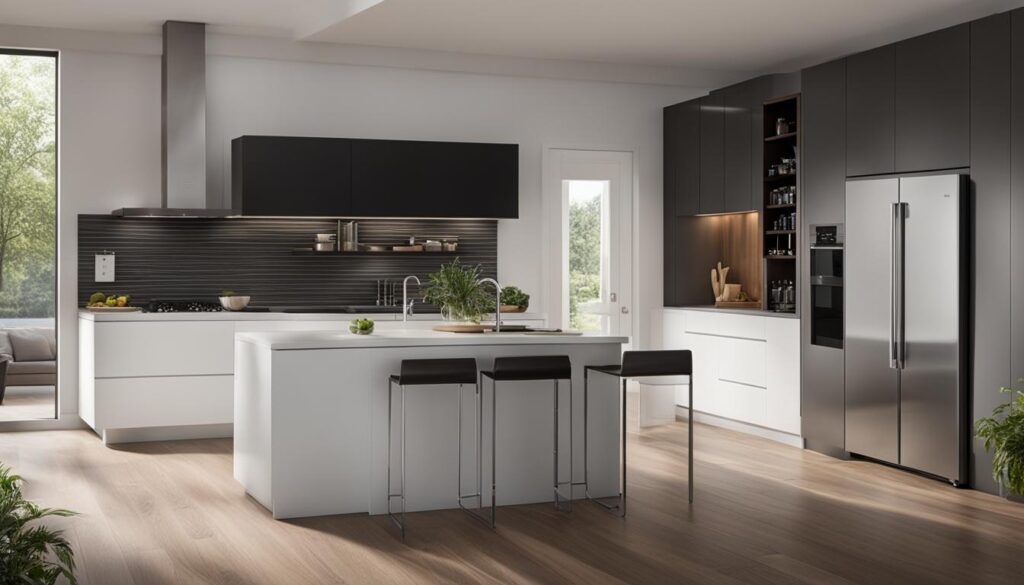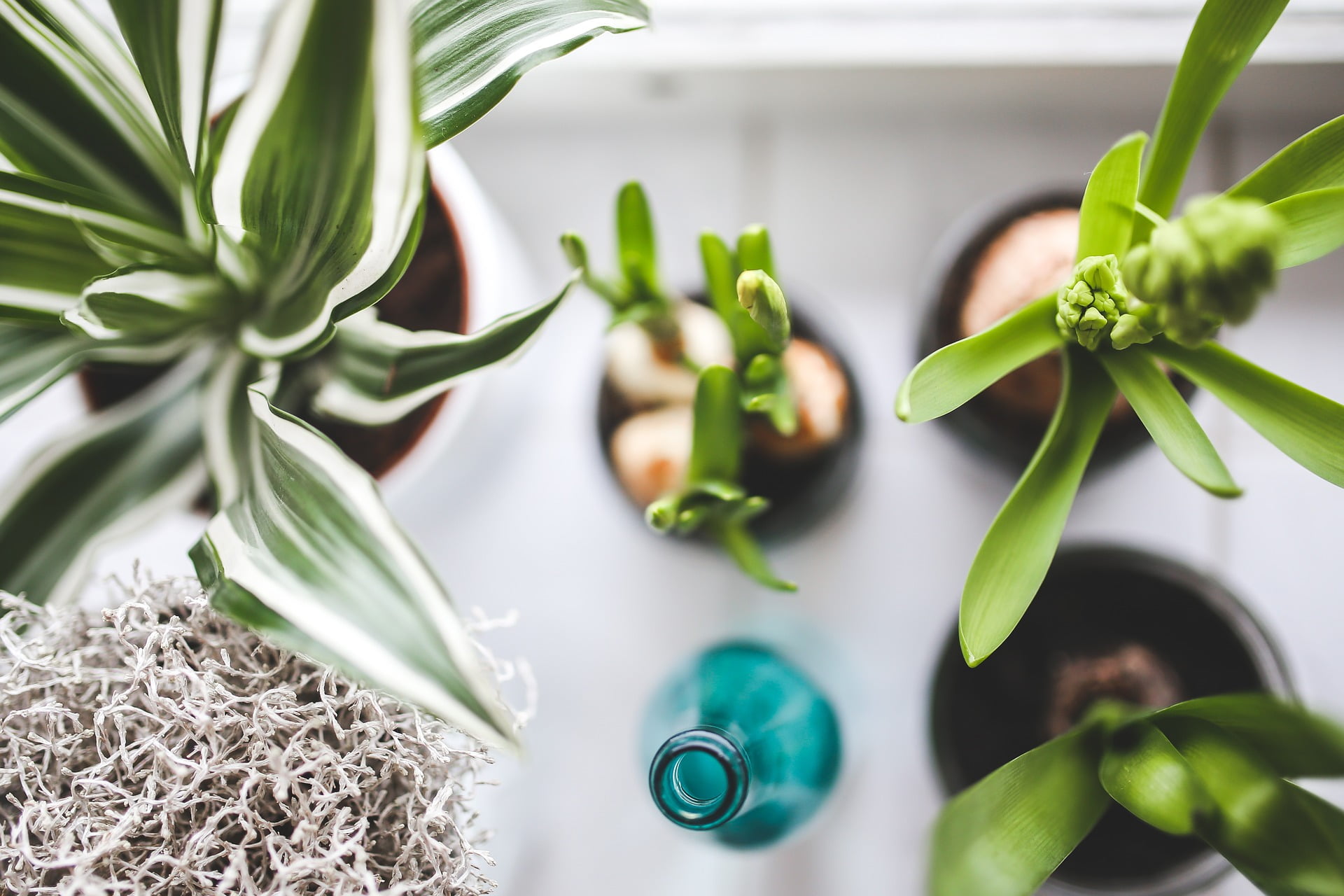Making eco-friendly home improvements is a great way to live a more sustainable lifestyle. Switching to energy-efficient lighting, upgrading windows to reduce energy waste, installing a tankless water heater, updating plumbing fixtures for water conservation, prioritizing energy-efficient appliances, upgrading to an eco-friendly fireplace, and considering solar panels are all excellent home improvement options to minimize environmental impact and save energy and money.
By embracing these eco-friendly improvements, you can reduce your carbon footprint and create a healthier living environment for you and your family. Not only will you be contributing to a greener future, but you will also enjoy the benefits of lower utility bills and increased energy efficiency.
Post Summary
- Switch to energy-efficient lighting, such as LED bulbs, to save energy and reduce electricity bills.
- Upgrade your windows to improve insulation and minimize energy waste.
- Consider installing a tankless water heater for on-demand heating and energy savings.
- Update your plumbing fixtures to conserve water and save on water bills.
- Prioritize energy-efficient appliances for reduced energy consumption and improved cooking efficiency.
Switch to LED Light Bulbs for Energy Efficiency
One of the easiest and most effective ways to make your home more energy-efficient is by switching to LED light bulbs. LED bulbs not only provide better lighting quality but also offer significant energy savings compared to traditional incandescent bulbs.
LED light bulbs are highly efficient as they use up to 80% less energy than incandescent bulbs, resulting in lower electricity bills. They also have a longer lifespan, lasting up to 25 times longer, which means fewer replacements and less waste. LED bulbs are perfect for various applications, from general lighting to specialty lighting for holidays and outdoor spaces.
By replacing all your old incandescent bulbs with LED bulbs, you can significantly reduce energy consumption and minimize your environmental impact. Not only will you save money on energy costs, but you’ll also contribute to a more sustainable future.
Benefits of LED Light Bulbs:
- Energy-efficient lighting solution
- Longer lifespan compared to traditional bulbs
- Significant energy savings up to 80%
- Lower electricity bills
- Versatile for various lighting applications
Switching to LED light bulbs is a small change that can have a big impact on both your wallet and the environment. Start by replacing the bulbs in the most frequently used areas of your home and gradually switch out the rest. With LED lighting, you can enjoy bright and energy-efficient illumination throughout your home while reducing your carbon footprint.
| Incandescent Bulbs | LED Bulbs | |
|---|---|---|
| Energy Efficiency | Low | High |
| Lifespan | Approximately 1,000 hours | Up to 25,000 hours |
| Energy Savings | N/A | Up to 80% |
| Environmental Impact | High | Low |
Switching to LED light bulbs is a simple and cost-effective way to lower your energy consumption and reduce your carbon footprint. With their long lifespan and energy-saving capabilities, LED bulbs are the smart choice for a more sustainable and eco-friendly home.
Upgrade Your Windows for Energy Savings
Upgrading the windows in your home is a smart and eco-friendly choice that can lead to significant energy savings. Old windows are often a major source of energy waste, allowing heated or cooled air to escape and outdoor air to seep in. By investing in upgraded, energy-efficient windows, you can improve insulation and reduce your energy demands, resulting in lower utility bills and a smaller carbon footprint.
Dual-paned windows are an excellent option for increasing energy efficiency. These windows consist of two layers of glass with an insulating gap in between, providing better insulation and reducing heat transfer. Properly sealed dual-paned windows are crucial to achieving optimal energy savings and preventing drafts. By eliminating air leaks, you can maintain a comfortable indoor temperature and reduce the strain on your heating or cooling system.
While the cost of upgrading windows may seem daunting, it’s essential to consider the long-term benefits. Many utility companies and government programs offer rebates or credits for energy-efficient home improvements, including window upgrades. These financial incentives can help offset the initial investment and make the upgrade more affordable. Additionally, energy-efficient windows can increase the value of your home and make it more attractive to potential buyers in the future.
Energy Savings with Upgraded Windows
| Window Upgrade | Annual Energy Savings | Utility Cost Savings |
|---|---|---|
| Upgrade from single-pane to dual-paned windows | 10% to 20% | $100 to $200 |
| Properly seal and insulate existing windows | 5% to 10% | $50 to $100 |
| Upgrade to energy-efficient windows with low-emissivity (low-E) glass | 15% to 30% | $150 to $300 |
By upgrading your windows, you can enjoy both immediate and long-term benefits. Not only will you reduce energy waste and lower your monthly bills, but you will also create a more comfortable and sustainable living environment. So, why wait? Upgrade your windows today and start experiencing the energy savings and environmental benefits.
Install a Tankless Water Heater for Energy Efficiency
Upgrade your home’s water heating system with a tankless water heater to enjoy both energy savings and a constant supply of hot water. Unlike traditional tank water heaters that constantly heat and store a large amount of water, a tankless water heater provides on-demand heating as water passes through pipes. This eliminates the need for standby energy consumption and ensures that you’ll never run out of hot water, even during peak usage times.
By switching to a tankless water heater, you can significantly reduce energy waste and lower your utility bills. According to studies, tankless water heaters are up to 34% more energy-efficient compared to conventional tank heaters. This means you’ll enjoy long-term cost savings while also reducing your carbon footprint.
Although the initial cost of purchasing and installing a tankless water heater may be higher than that of a traditional tank heater, the energy savings and longer lifespan of a tankless system make it a worthwhile investment. On average, tankless water heaters last up to 20 years, while tank heaters typically have a lifespan of only 10-15 years. Additionally, many utility companies offer rebates and incentives to help offset the initial cost of installation, making the switch even more affordable.
When choosing a tankless water heater, consider factors such as the size of your household and the desired flow rate. It’s important to select a unit that can meet your hot water demands without compromising performance. Consulting with a professional plumber or heating specialist can help you determine the right size and type of tankless water heater for your home.
Benefits of Installing a Tankless Water Heater:
- Significant energy savings compared to traditional tank heaters
- Never run out of hot water, even during peak usage
- Reduced carbon footprint and lower greenhouse gas emissions
- Longer lifespan and lower maintenance costs
- Potential rebates and incentives from utility companies
Conclusion:
Investing in a tankless water heater is a smart choice for homeowners looking to improve energy efficiency and enjoy a consistent supply of hot water. With the potential for long-term energy savings, reduced environmental impact, and the added convenience of never running out of hot water, a tankless water heater offers both financial and ecological benefits. Consult with a professional to determine the right tankless water heater for your home and start enjoying the advantages today.
Update Your Plumbing for Water Conservation
When it comes to making eco-friendly home improvements, updating your plumbing fixtures can have a significant impact on water conservation. Older fixtures, especially those predating the early 1990s, tend to waste a lot of water. By switching to efficient plumbing fixtures, such as WaterSense labeled toilets, you can reduce water use by 20% to 60% annually. This not only helps conserve water but also translates to significant cost savings over time.
A WaterSense labeled toilet is designed to use less water per flush while still maintaining effective performance. These fixtures incorporate innovative technologies that optimize water flow, reducing waste without compromising functionality. By replacing your old, water-guzzling toilet with a WaterSense labeled model, you can contribute to water conservation efforts without sacrificing your comfort.
In addition to toilets, upgrading other plumbing fixtures such as faucets and showerheads can also help reduce water consumption. By choosing fixtures that are designed to be water-efficient, you can minimize water waste and lower your monthly water bills. It’s a small change that can make a big difference for both the environment and your wallet.
So, if you’re looking for ways to live a more sustainable lifestyle and save on your water bills, consider updating your plumbing fixtures. By investing in efficient plumbing fixtures like WaterSense labeled toilets, you can significantly reduce your water use and make a positive impact on the environment. Start making a difference today!
Prioritize Energy-Efficient Appliances for Reduced Energy Consumption
When it comes to making sustainable home improvements, prioritizing energy-efficient appliances is a smart choice. By choosing Energy Star certified appliances, you can significantly reduce your energy consumption and minimize your environmental impact. These appliances are designed to be more energy-efficient, resulting in lower electricity bills and a greener lifestyle.
One important factor to consider is heat loss and cold retention. Energy-efficient appliances are built with advanced insulation technology to reduce heat loss and keep cold air inside, ensuring optimal temperature control and efficiency. This means that your refrigerator will consume less energy to maintain the desired cold temperature, translating into energy savings over time.
Cooking efficiency is another key aspect of energy-efficient appliances. Modern stoves and ovens are designed to heat up quickly and distribute heat evenly, allowing you to cook your meals more efficiently. By utilizing these features, you can reduce cooking time and minimize energy waste.
Full Load Run
Running your dishwasher or washing machine only when they are full can also contribute to energy savings. These appliances are designed to be most efficient when operating at full capacity. By waiting until you have a full load of dishes or laundry, you can maximize the energy efficiency and minimize the number of cycles, ultimately saving both energy and water.
| Energy-Efficient Appliances | Benefits |
|---|---|
| Refrigerators | Lower energy consumption, better temperature control |
| Stoves and ovens | Quick heating, even heat distribution for efficient cooking |
| Dishwashers | Energy and water savings, optimal performance at full load |
| Washing machines | Efficient cleaning, reduced energy and water usage at full load |
Investing in energy-efficient appliances is not only beneficial for the environment but also for your wallet. While the upfront cost may be slightly higher, the long-term energy savings and efficiency make it a worthwhile investment. So, if you’re looking to reduce your energy consumption and minimize your carbon footprint, consider upgrading to energy-efficient appliances for a more sustainable home.
Consider Switching to Solar Panels for Renewable Energy
Looking to make a truly impactful eco-friendly home improvement? Consider switching to solar panels. Solar power is a renewable energy source that can help reduce greenhouse gas emissions, preserve water, and limit air pollution. By harnessing the power of the sun, you can generate clean and sustainable electricity for your home.
Solar panels not only contribute to a greener future but also offer significant energy savings. While there is an upfront investment involved, residential solar panels can pay for themselves within 10 years through reduced energy bills. With advancements in technology, solar panels have become more cost-effective than ever, making them an attractive option for homeowners seeking long-term energy solutions.
Switching to solar panels is a smart move towards a more sustainable lifestyle. By taking advantage of this abundant and renewable energy source, you can reduce your carbon footprint and make a positive impact on the environment. So why wait? Start exploring the benefits of solar power today and join the growing community of homeowners embracing clean energy solutions.
FAQ
What are some eco-friendly home improvement options?
Some eco-friendly home improvement options include switching to energy-efficient lighting, upgrading windows to reduce energy waste, installing a tankless water heater, updating plumbing fixtures for water conservation, prioritizing energy-efficient appliances, upgrading to an eco-friendly fireplace, and considering solar panels.
How can LED light bulbs help with energy efficiency?
LED light bulbs are more energy-efficient, have a longer lifespan, and result in energy savings. By replacing traditional incandescent bulbs with LED bulbs throughout the house, as well as for holiday lights and landscape lights, you can reduce energy consumption and decrease electricity bills.
How can upgrading windows contribute to energy savings?
Upgrading windows to dual-paned windows that are properly sealed can improve insulation and reduce energy demands. Although new windows can be costly, there is a good return on investment, and rebates or credits are often available to offset the cost.
What are the benefits of installing a tankless water heater?
Tankless water heaters provide on-demand heating as water passes through pipes, eliminating the need to continuously heat and store excess water. This results in energy savings and the added benefit of never running out of hot water. Although tankless water heaters are more expensive to purchase and install, the energy savings and longer lifespan make them a worthwhile investment.
How can updating plumbing fixtures contribute to water conservation?
By switching to efficient plumbing fixtures, such as WaterSense labeled toilets, water use can be reduced by 20% to 60% annually. This translates to significant water and cost savings each year. Upgrading plumbing fixtures is an investment that pays for itself over time.
How do energy-efficient appliances contribute to reduced energy consumption?
Energy-efficient appliances, especially those certified by Energy Star, have significant advancements in energy conservation, with improved heat retention and reduced heat loss. Simple practices such as covering pans while cooking and using smaller appliances when possible can also contribute to energy savings. Running dishwashers and washing machines only when full further enhances energy efficiency.
What are the benefits of switching to solar panels?
Switching to solar panels reduces greenhouse gas emissions, preserves water, and limits air pollution. As the cost of solar panels continues to decrease, and the quality improves, they are becoming a more cost-effective option. Although there is an upfront investment, residential solar panels can pay for themselves within 10 years through energy savings. Solar panels are a long-term sustainable solution for renewable energy generation.











